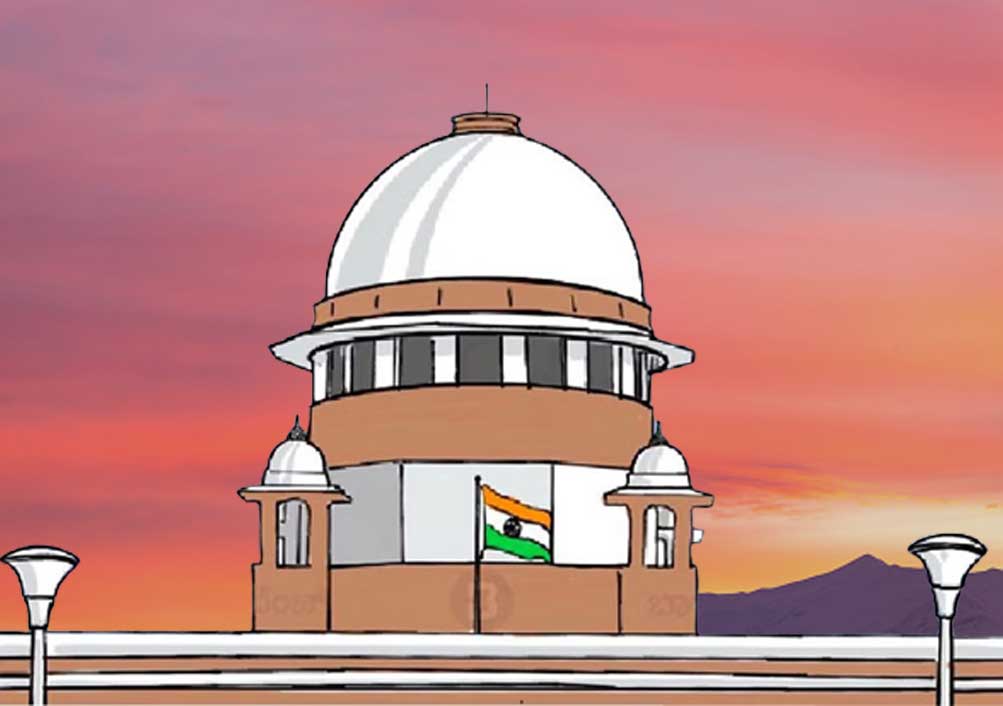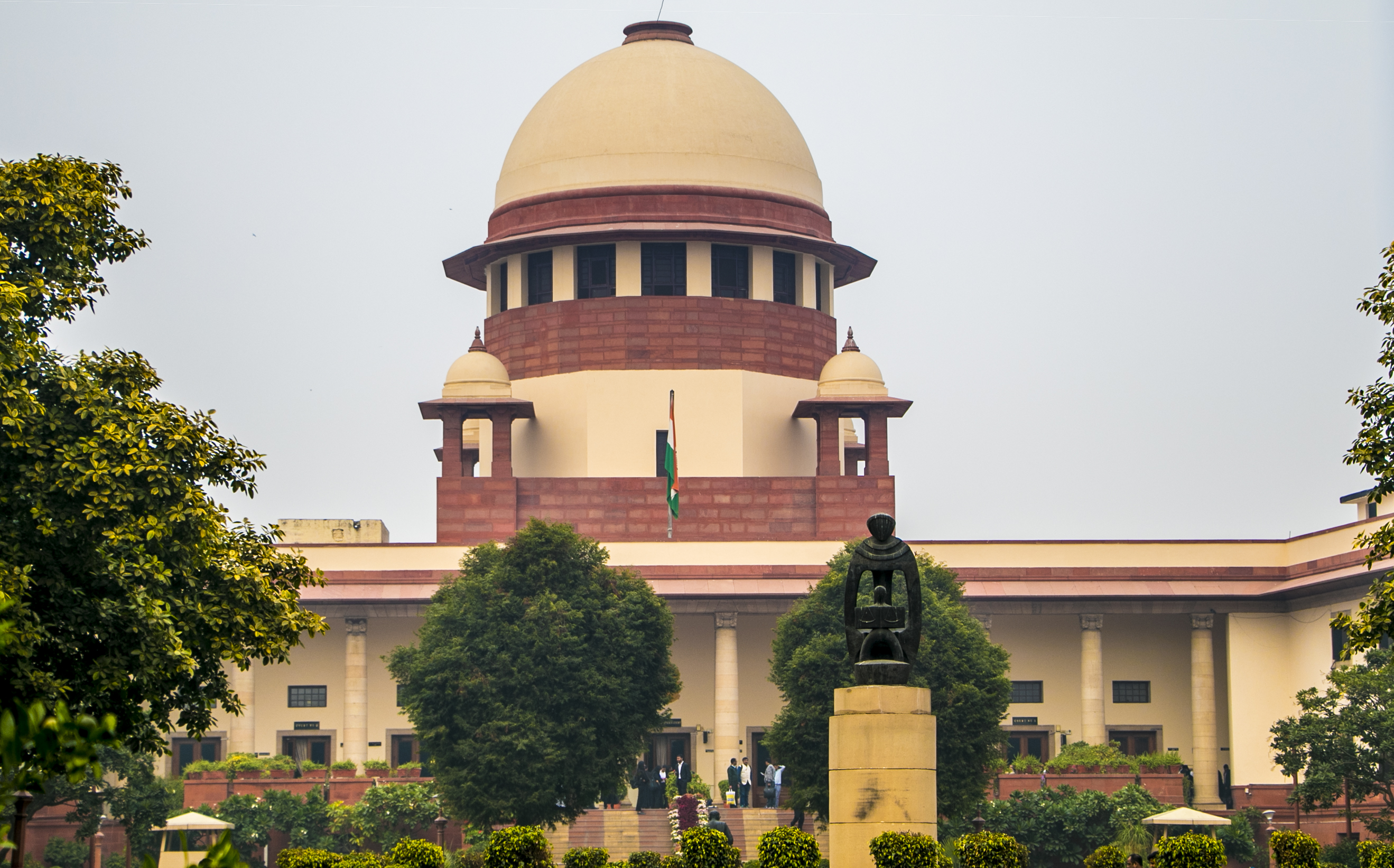In Civil Appeal No. 8411 of 2014 -SC- Supreme Court division bench delivers split verdict in land acquisition case, refers suit to larger bench
Justice Manoj Misra & Justice Hrishikesh Roy [19-10-2023]

Read Order: Urban Improvement Trust, Bikaner V. Gordhan Dass (D) Through Lrs. & Others
Chahat Varma
New Delhi, October 27, 2023: In a recent land acquisition case, the Supreme Court’s division bench has delivered a split verdict, with Justice Manoj Misra holding that the failure to serve notice to the landowner does not invalidate the acquisition notification, and Justice Hrishikesh Roy holding that the failure to serve notice violates constitutional rights and may render the acquisition invalid.
The case centred around three key issues: Firstly, whether the failure to serve notice to the plaintiff as required by the Rajasthan Urban Improvement Trust Act, 1959 rendered the acquisition notification void in the civil court's view. Secondly, the question of whether the plaintiff's injunction suit, which didn't seek declaratory relief and omitted the State as a defendant, was maintainable. Lastly, whether the plaintiff's civil suit was barred by Section 207(2) of the Rajasthan Tenancy Act, 1955.
Justice Manoj Misra rejected the plaintiff's argument that the acquisition notification was void due to the lack of notice to the landowner, as required by the 1959 Act. He explained that if the owner's name is not listed in the land's record of rights, there is no legal obligation on the state authorities to conduct an extensive investigation to identify the actual owner for serving notice before issuing the acquisition notification. In such situations, the statutory obligation of serving notice on the owner is considered fulfilled if it is served on the owners whose names are recorded in the record of rights.
“I am of the view that mere non-service of notice, under Section 52 (2) of the 1959 Act, upon non-recorded owner, such as the plaintiff, would not render the acquisition notification under Section 52(1) void,” noted Justice Misra.
Justice Misra also pointed out that in the present case, the appellant (defendant no. 1) had unequivocally claimed that the disputed land had already been acquired. This statement raised questions about the plaintiff's title to the land, as per the provisions of Section 52(4) of the 1959 Act. Additionally, during the course of the lawsuit, the plaintiff himself admitted that possession had been taken. Considering these circumstances, the Justice Misra concluded that a simple injunction suit, without the plaintiff seeking a declaratory relief regarding the validity of the acquisition notification, was not a legally sustainable course of action.
Justice Manoj Misra further highlighted another significant flaw in the plaintiff's case, which was the absence of the State as a defendant in the suit. This omission was problematic because all actions related to the acquisition of the land under Section 52(1) of the 1959 Act were carried out by the State. As per Section 52(4) of the 1959 Act, the land vested in the State. Therefore, when the plaintiff launched a collateral attack on the validity of the acquisition by alleging that necessary steps for a lawful acquisition were not taken, it was the State that held the information regarding whether all the required steps for a valid acquisition were indeed carried out. The non-joinder of the State as a party to the suit was considered a significant flaw, further weakening the plaintiff's case in the eyes of the court.
Justice Manoj Misra further determined that once it was established that two out of the three bighas of the disputed land were agricultural land falling within the purview of the 1955 Act, the suit for injunction could have been maintained before the Revenue Court. Consequently, Justice Misra found that the suit filed in the Civil Court was barred by the 1955 Act, as it should have been pursued in the Revenue Court due to the nature of the land in question and the relevant legal provisions.
Consequently, Justice Manoj Misra concluded that the plaintiff's suit was not maintainable regarding the land covered by the acquisition notification and was also barred by Section 207 read with Section 256 of the Rajasthan Tenancy Act, 1955. As a result, he allowed the defendant's appeal.
On the other hand, Justice Roy emphasized the importance of serving notice not only to the owner but also to any other person interested in the land, as stipulated by Section 52 of the 1959 Act.
Justice Roy emphasized the critical importance of following the prescribed statutory process, particularly the provision of proper notice. He pointed out that dispossessing someone without adhering to this process not only causes significant harm but also constitutes a violation of constitutional rights. Such violations can potentially render the entire land acquisition process invalid.
Further, Justice Roy emphasized that the jurisdiction of civil courts should not be excluded lightly. He referred to Section 9 of the Code of Civil Procedure, which grants civil courts the authority to try all civil suits unless expressly prohibited by law.
Justice Roy also stated that the plaintiff's suit, which primarily sought permanent injunction related to ownership and possession of land, couldn't be adequately addressed by the forums empowered under the Tenancy Act,1955, which primarily deals with tenancy rights and their protection. Therefore, the jurisdiction of the civil court was not ousted by the provisions of the Tenancy Act,1955, and the appellant's argument to the contrary was rejected.
Justice Roy also pointed out that the non-impleadment of the State as a defendant in the suit should not be considered fatal to the maintainability of the suit. This was because the contesting defendant, the Urban Improvement Trust, was deemed an instrumentality of the State and the beneficiary of the land acquisition process.
Lastly, Justice Roy acknowledged that the case involved landowners whose properties were forcibly acquired by the Urban Improvement Trust, Bikaner, without proper notice and clear compensation. Subsequently, the landowners filed a lawsuit to prevent their dispossession. Justice Roy recognized this as a valid grievance, especially as the landowners had achieved partial success in the lower courts and complete relief in the appellate stage. Justice Roy expressed the view that it would not be just to consider their suit as not maintainable. Instead, he suggested that justice would be better served by avoiding further litigation and allowing redress for the landowners' grievances regarding their loss of land without proper notice or fair compensation.
In view of the difference of opinions, the matter was referred to the Hon'ble Chief Justice for consideration by a larger Bench.
Sign up for our weekly newsletter to stay up to date on our product, events featured blog, special offer and all of the exciting things that take place here at Legitquest.




Add a Comment